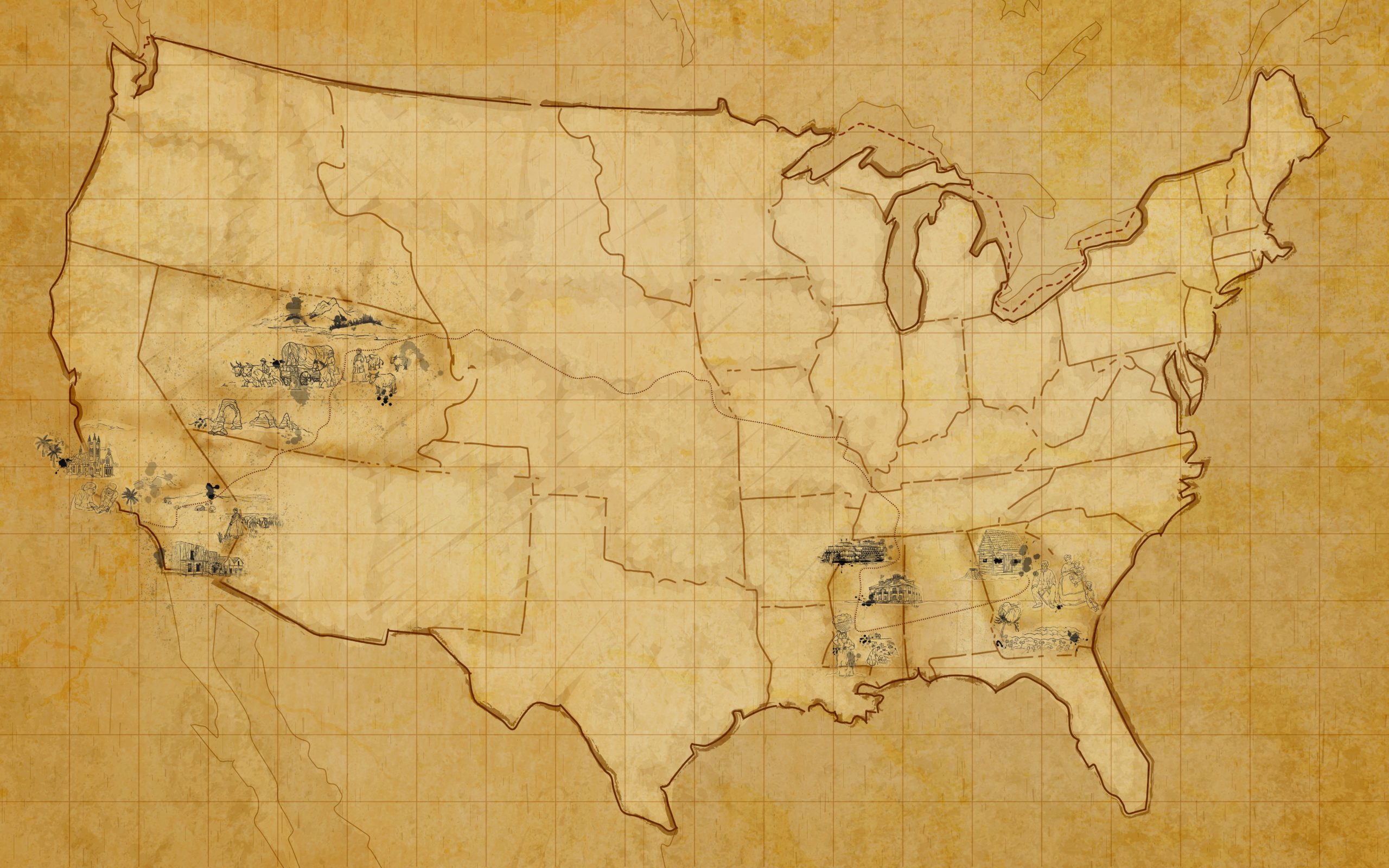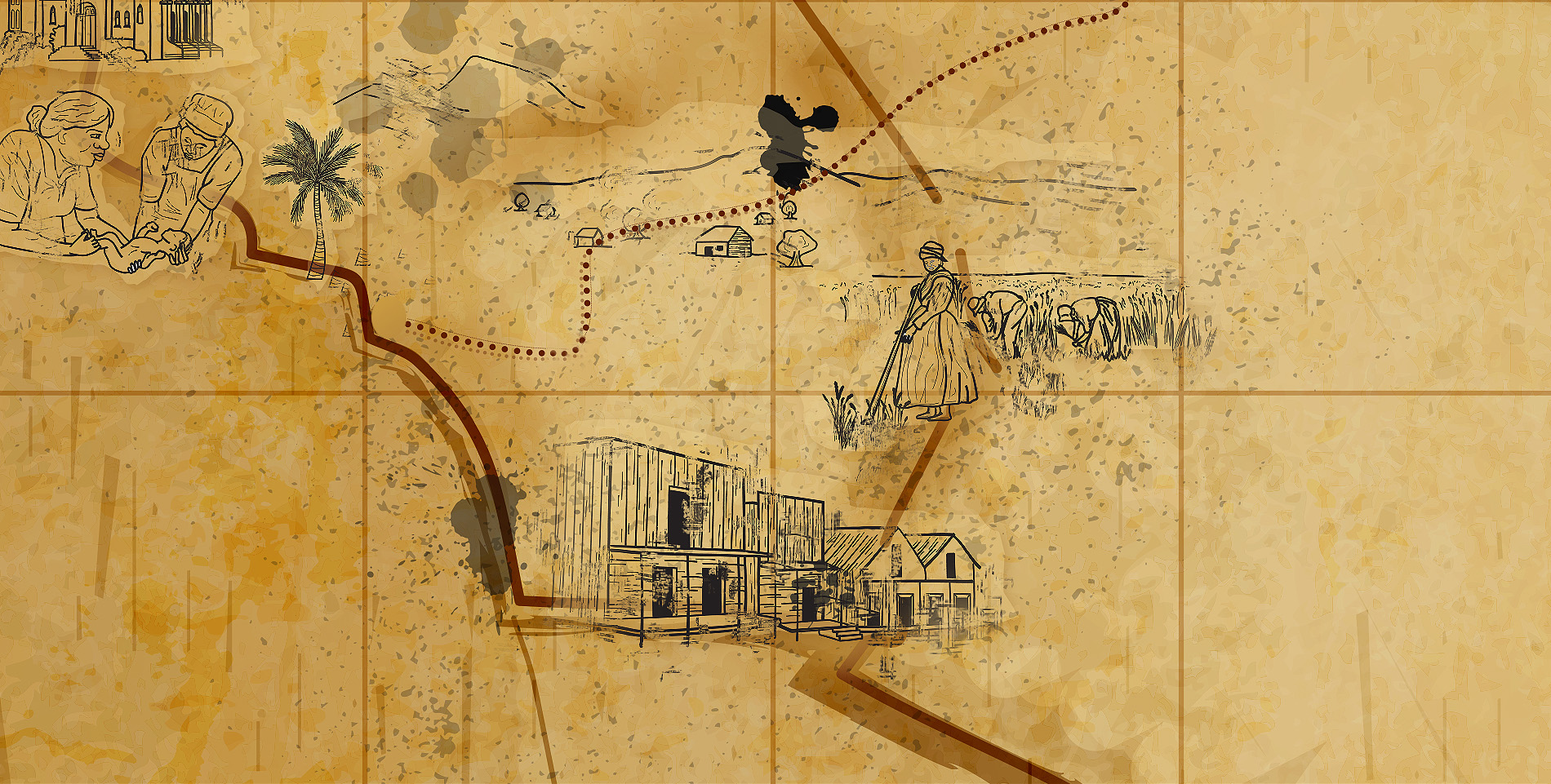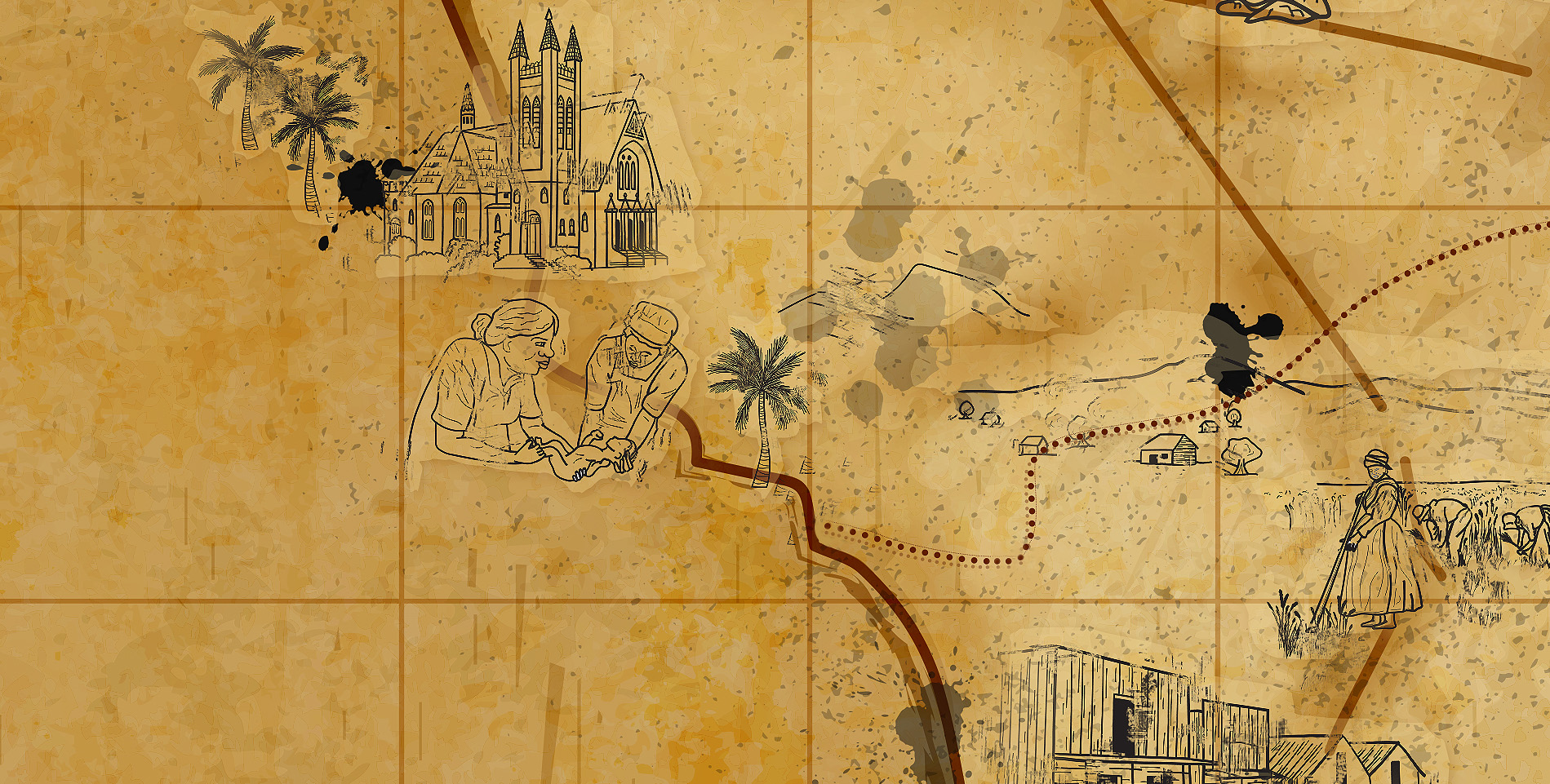georgia
Mississippi
Biddy’s long road west began at an early age, when she was separated from her family and sold to another slaveholder. Roughly 1 million African Americans shared this fate of involuntary removal to the fertile soils of the Southern interior -- what’s known as the “Second Middle Passage.” Through her forced labor, Biddy helped transform Mississippi into the new heartland of America’s Cotton Kingdom.
Sometime in the early 1840s, Biddy came into the household of Robert M. Smith in Franklin County, Mississippi. During her years in Mississippi, Biddy gave birth to three daughters. Their paternity is not known, though it’s likely that Smith himself fathered one of these children. Biddy, like countless other enslaved women, was almost certainly the victim of sexual violence.
UTAH
In 1844, Smith and his wife were baptized into the Church of Christ of Latter-day Saints. Several years later, they joined thousands of other Mormon migrants in the long overland trail to what would become the Territory of Utah. Along with his family, Smith forcibly transported ten enslaved laborers to Utah, including Biddy and her children. Biddy herded cattle and prepared meals on the journey. She may have also served as a midwife to the migrants, drawing on skills she learned in Georgia and Mississippi. The Smith party settled among other LDS slaveholders in Cottonwood Canyon, southeast of Salt Lake City.
Biddy and her children were among dozens of enslaved African Americans in Utah. In 1852, Utah’s legislature passed “An Act in Relation to Service,” which legalized slavery within the territory. Utah’s white colonists also purchased enslaved Native Americans, who generally worked as domestic servants in Mormon households.
SAN BERNARDINO, CA
Biddy came to California in 1851 as part of a new LDS colony at San Bernardino. Governor Brigham Young authorized the Mormon settlement there to extend the reach of his Church. Within several years, it was comparable in size and -- by some metrics -- more prosperous than neighboring Los Angeles.
San Bernardino was built, in part, by enslaved laborers like Biddy. Dozens of African Americans brought from the South, as well as an untold number of local Native Americans, were held in bondage in the Mormon colony. Biddy, along with Hannah (another woman owned by Smith), performed valuable work as midwives in the growing settlement. Although California had prohibited human bondage in its 1850 constitution, lawmakers and jurists empowered slaveholders within the state. By 1856, Smith laid claim to fourteen enslaved women and children, including Biddy and her three children, making him the largest slaveholder in the American Far West.
LOS ANGELES, CA
But Smith’s fortune came crashing down in early 1856, when Biddy and his thirteen other enslaved African Americans finally walked free.
After running afoul of the LDS establishment in San Bernardino, Smith attempted to leave the colony for Texas, where skilled slaves like Biddy and Hannah would fetch handsome prices. But, while he camped in the Santa Monica Mountains, Smith was served with a writ of habeas corpus, commanding him to present the enslaved people under his control. In the ensuing trial, Judge Benjamin Hayes of the Los Angeles District Court indicated that he would rule against Smith. Smith absconded rather than defend the case. As a result, Biddy and thirteen other women and children were finally emancipated in one of the largest freedom suits in American history.
Biddy took the last name Mason and began a remarkable career as a freedwoman. She became a renowned healer and midwife, while also investing in real estate in the young boomtown of Los Angeles. As L.A. grew rapidly, beginning in the 1870s, so too did Biddy’s fortune. Her largesse and her medical skills served the community of Los Angeles. Biddy tended to the sick, to orphans, and to prisoners. She also co-founded the city’s first black house of worship, First African Methodist Episcopal Church. By the time of her death in 1891, she was worth an estimated $300,000 (roughly $8.5 million today).
Biddy’s legacy lives on through philanthropic institutions that bear her name and in the city she shaped. Her long road to freedom ended in the beginnings of an American metropolis.





